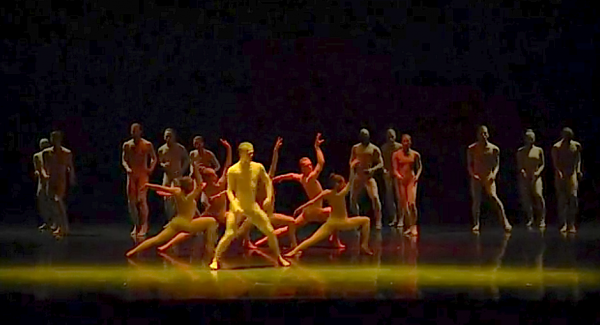
“It’s getting better all the time…,” to appropriate a passage from a Beatles’ song that aptly applies to this year’s just concluded Laguna Dance Festival.
Looking back on its 13th season, the festival’s founder Jodie Gates achieved a new pinnacle by presenting the modern dance groups Paul Taylor Dance Company and Ballet BC, a Canadian company founded in 1986 that keeps growing its vision and repertoire with work by international contemporary choreographers.
The companies performed to near sold-out houses and increasingly younger audiences, a sign that Gates successfully continues her emphasis on making the art of dance accessible to general audiences and mentoring future generations of dancers. The festival again awarded $1,000 scholarships to two local students and offered youth master classes, discounted tickets and backstage passes, said the festival’s executive director Joy Dittberner.
Given the expenses connected to hosting two larger high-voltage troupes, tickets rose this year by $10, ranging from $35 for students to $75 for the Saturday night gala and reception. But, for the first time there were also $10 rush tickets for balcony seats.
Attractions included pre-performance talks with company members. Gates led the talks with former Paul Taylor principal dancer and now rehearsal director Bettie de Jong and stage manager Stacey-Jo Marine, illuminating Taylor as a dancer, choreographer and visionary.
The audience learned that Taylor, now 87 and a former lead dancer with Martha Graham, has unique methods of annotating and archiving dance compositions for future generations that include intricate videography and de-markations of dancers and stage points.
Very little is written down these days, said de Jong. “A lot of works by Merce Cunningham and Martha Graham are not presented anymore and yet they have to be kept somewhere,” she explained.
With an emphasis on iconic repertoire, how does the company keep its dancers inspired and engaged? “That’s up to the dancers themselves. It’s not that you want to dance, but that you have to dance,” said de Jong. “You never get tired of good material. You must be driven to dance and if you are not, you leave,” she emphasized. As an aside, Gates confessed that she auditioned with Taylor, but did not get in.
The company performed “Esplanade,” set to music by J.S Bach and “Arden Court,” set to music by 18th century British composer William Boyce. In their own way, both pieces vacillated between the courtly and the carefree, suggesting that the art of dance can also be fun.
The piece de resistance was “Piazolla Caldera,” choreographed by Taylor to music by Astor Piazolla and Jerzy Peterburshsky. “It’s set to tango music, but none of the steps are tango,” explained de Jong. Instead, men and women wore Argentinian inspired period costumes while telling stories of love and joy, love and loss, competition and rejection, boy gets girl, girl loses boy, girl gets girl, and other variants of the human condition.
All that said, Ballet BC stole the four-day festival, Sept. 14-17. Its physicality was breathtaking and story telling sublime. Simplified costumes revealed healthy, toned bodies, rather than the stereotype stick figures, and moves bordering on acrobatic. Hands and facial expressions revealed total emotional involvement of dancers who, while classically trained, are encouraged to follow their own intellect and instincts while interpreting roles. “One might compare our dancers to jazz musicians who explore the possibilities of their art. They are soloists within a group,” said Emily Molnar, choreographer of “16+ a room,” a piece suggesting the challenges of human co-existence.
Back stories vacillated from the thought provoking “Solo Echo,” with music by Johannes Brahms, to the mesmerizing “Bill,” by Israeli choreographers Sharon Eyal and Gai Behar.
Crystal Pite based “Solo Echo” on the Mark Strand poem “Lines for Winter.”
With the stage nearly dark and thick snow falling behind dancers going through often lugubrious motions, it was easy to see the poet’s words recast onstage: “Tonight as it gets cold, tell yourself what you know is nothing but the tune your bones play….”
Lastly, there was “Bill” with its religious undertones, a story which I interpret as birth, the rewards and travails of being human and the inevitable end. Here, I simply gave up taking notes lest I miss a move. At the performance’s end, a heretofore hushed audience broke into a standing ovation and raucous bravos.
Correction:
Due to inaccurate information provided by a Laguna Dance Festival representative, the article “Crowds Marvel Over DistinctiveModern Dance Troupes” in the Sept. 22 edition, misstated how many scholarships were awarded. There were five, according to founder Jodie Gates.





Thousands drive and burn thousands of gallons of nasty fossil fuel to see adults prancing on stage in leotards. So much for preachy “climate change” talk throughout Laguna Beach. The hypocrisy escapes all residents, who never practice what you preach.